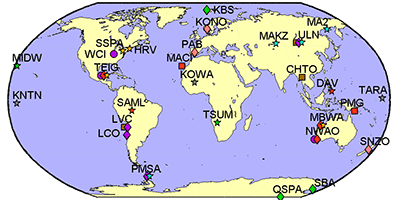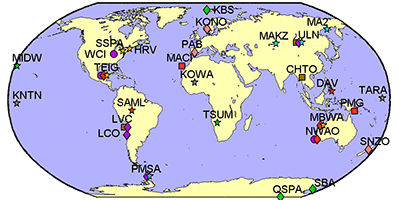Earth as Giant Gravitational Wave Detector
Gravitational wave (GW) detectors range from meter-wide test masses to kilometer-long laser interferometers. The Earth itself is also a potential GW receiver that outputs its signal in seismic waves. A new analysis of seismograph data constrains the amount of GW radiation in the Universe at frequencies just below hertz (Hz). The derived upper limit, presented in Physical Review Letters, is orders of magnitude lower than the previous bound at these frequencies.
Gravitational waves are ripples in the fabric of spacetime, predicted to arise from the accelerated motion of massive bodies, such as orbiting neutron stars. When a GW passes through an object (like Earth), it can induce very small, potentially detectable vibrations. The physicist Freeman Dyson speculated in 1968 that one might detect the GWs from pulsars in seismic wave data. However, several past attempts failed to find a verifiable signal. In fact, no detector of any kind has directly observed a GW as of yet.
Michael Coughlin of Harvard University and Jan Harms of the National Institute of Nuclear Physics in Florence, Italy, take a fresh look at the GW-seismic wave connection. Instead of searching for a signal from a specific GW source, they consider the sum of all GW emission over the sky in the largely unexplored frequency region between and Hz. This uniform GW background would presumably contribute to random seismic wave noise. Therefore, by estimating the noise in a global network of seismographs, the researchers place an upper bound on the energy density of sub-hertz GW radiation. This limit is not very stringent when compared to other limits at higher and lower GW frequencies. But the new bound is a factor of a billion better than previous limits at similar frequencies provided by precision laboratory mass measurements. – Michael Schirber





